Role
UX Researcher/Designer
Timeline
7 months - Honours Project
Team
Solo project - end-to-end UX and development
Skills
User Research
Interaction Design
Visual Design
Wireframing & Prototyping
The Problem
The project focuses on the gamification of anxiety and depression among students, aiming to raise awareness and provide support through a serious game. The goal is to create an engaging and educational experience that helps students understand mental health issues, recognise symptoms, and encourage them to seek help when needed.
Project Goals
- Help spread the awareness of anxiety and depression
- Using gamification of mental health through a serious game in order to spread awareness
- Giving students advice and recommending them to seek help with their mental health
Target Audience
This project focuses on students as the main target audience, with the goal of raising awareness about anxiety and depression and encouraging positive mental health practices.
Research
Design Solution
Colour Scheme
This colour scheme combines two shades of green (#3E942B and #79D185), soft grey (#6B6B6B), deep charcoal (#303030), and a clean white (#EDEDED) to create a calm yet reassuring look. It was chosen because green is often linked with balance, renewal, and hope, feelings that are vital when addressing anxiety and depression among students. The lighter green brings a friendly, encouraging tone, while the darker green offers stability and grounding. The greys introduce neutrality and safety, fostering an environment for open, judgement-free conversations. The white adds clarity and a sense of a fresh start. Together, these colours convey support, warmth, and quiet strength, the exact message intended.
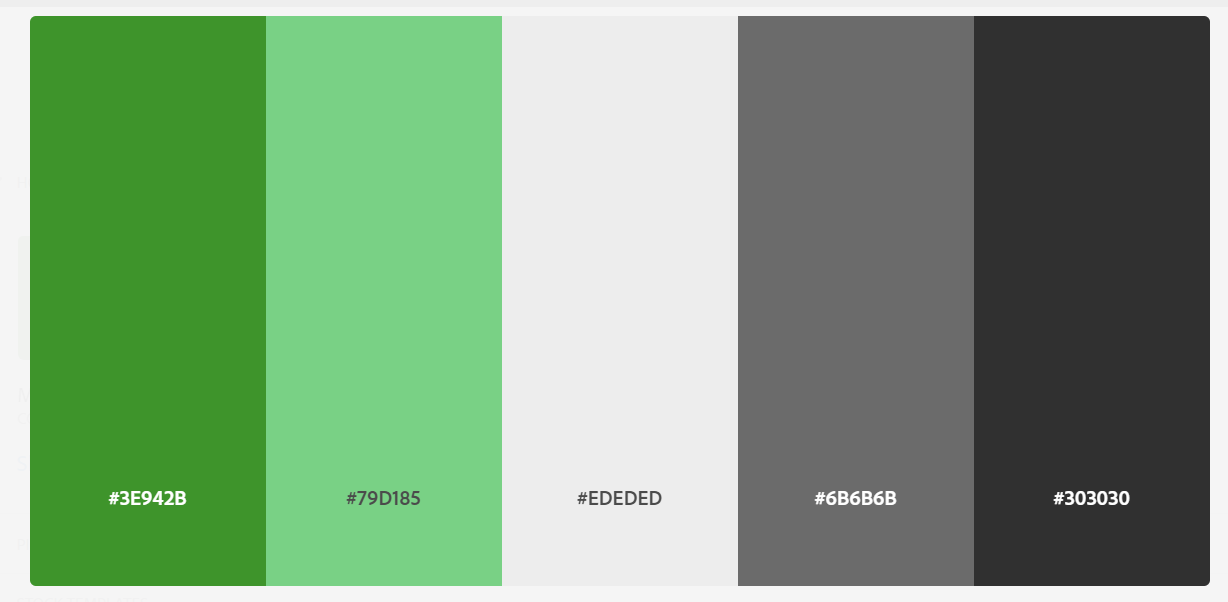
Honours Project Logo

This logo was chosen because it beautifully captures the connection between the mind and the heart, reflecting the way anxiety and depression affect both our thoughts and emotions. The green silhouette of the head represents awareness and mental wellbeing, while the red heart within it symbolises care, empathy and emotional strength. Together, they highlight the importance of looking after both our mental and emotional health. For students, it’s a gentle reminder that understanding mental health is not just about knowledge, but also about kindness towards ourselves and others, which is exactly what this gamified project hopes to inspire.
Game Assets
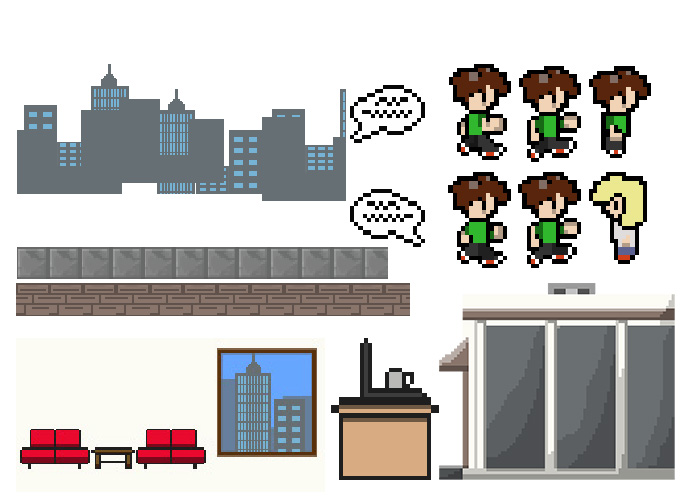
The pixel-art assets for Student Life, a game aimed at raising awareness of anxiety and depression among students, use a nostalgic retro style to evoke warmth and familiarity. The city skyline, cosy indoor rooms, and campus-inspired spaces reflect the everyday settings students move through, from lively public areas to quieter corners for reflection. The character sprites and speech bubbles focus on conversations, capturing both the pressures and moments of support that shape student life. By using a nostalgic art style, the game creates a comforting, relatable atmosphere that helps players engage with sensitive mental health themes in a gentle, human way.
Website Prototypes
These prototypes for the Student Wellbeing website aim to create a welcoming and supportive space for students facing anxiety and depression. The clean, approachable design uses friendly imagery of real people in relatable situations, helping users feel understood rather than confronted. Each section is structured to provide clear, digestible information, whether it’s explaining symptoms, offering coping strategies, or guiding friends on how to help. Buttons and navigation are simple and intuitive, making it easy for users to find the resources they need without feeling overwhelmed. The “Get in Touch” section humanises support by giving both an email and a phone option, recognising that different people feel comfortable reaching out in different ways. The balance of text and images avoids a clinical feel, instead fostering empathy and connection. These prototypes not only inform but also reassure students that they are not alone, and help is just a click or call away.
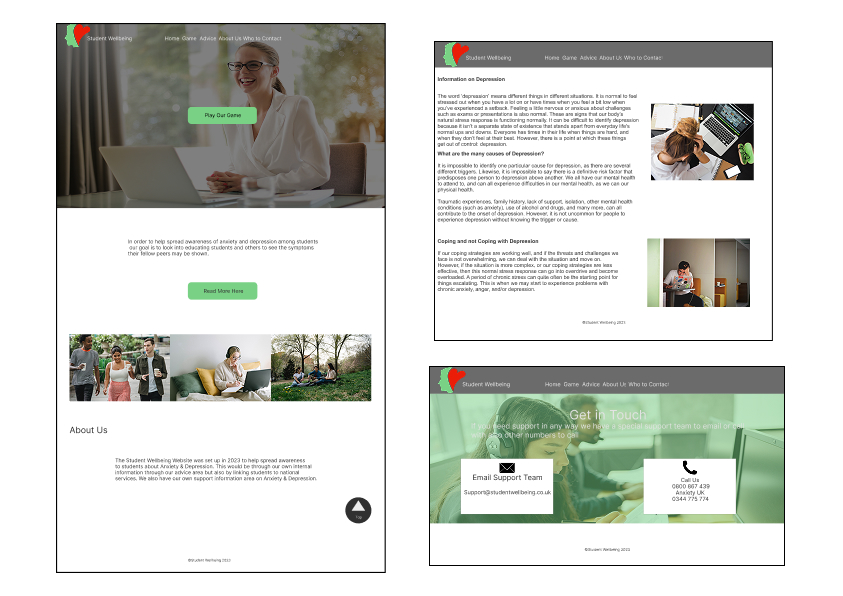

Game Prototypes
These Student Life game prototypes use a playful, pixel-art style to make learning about mental health approachable and engaging. The simple menu system allows players to start the game, adjust settings, or return home with ease, ensuring accessibility and comfort. Once in the game, players control a character exploring a cityscape, symbolising student life and its challenges. The friendly in-game dialogue, asking whether the player wants help with anxiety or depression, creates a personal and supportive tone. By blending lighthearted visuals with meaningful choices, the prototypes encourage awareness and empathy while making sensitive topics easier to approach.
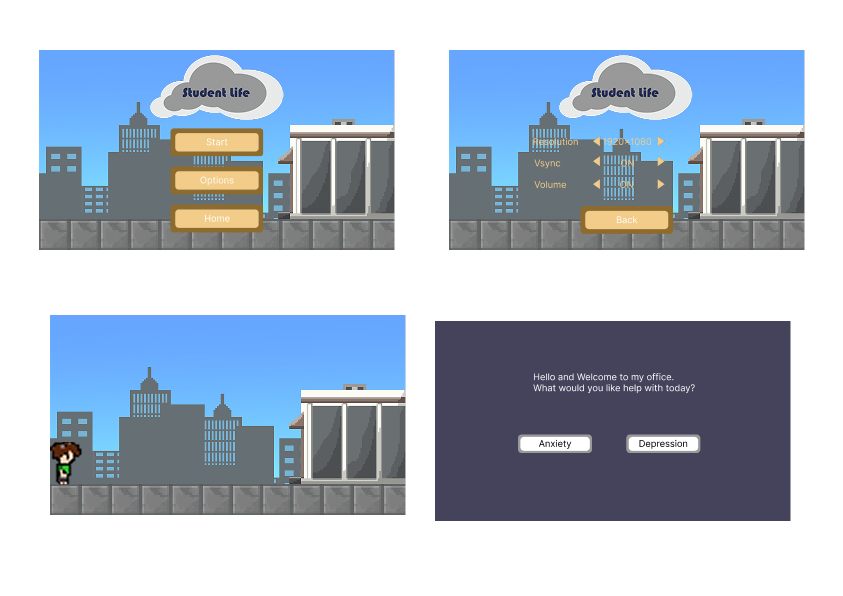
Prototypes Interactions
This image is a blueprint of a very neat and organised system, with each screen acting as a separate building block. The layout is tidy and intentional, showing the basic structure before any user interaction comes into play. It's a snapshot of careful planning, where all the individual bits are ready and waiting to be put together into a single, seamless whole.
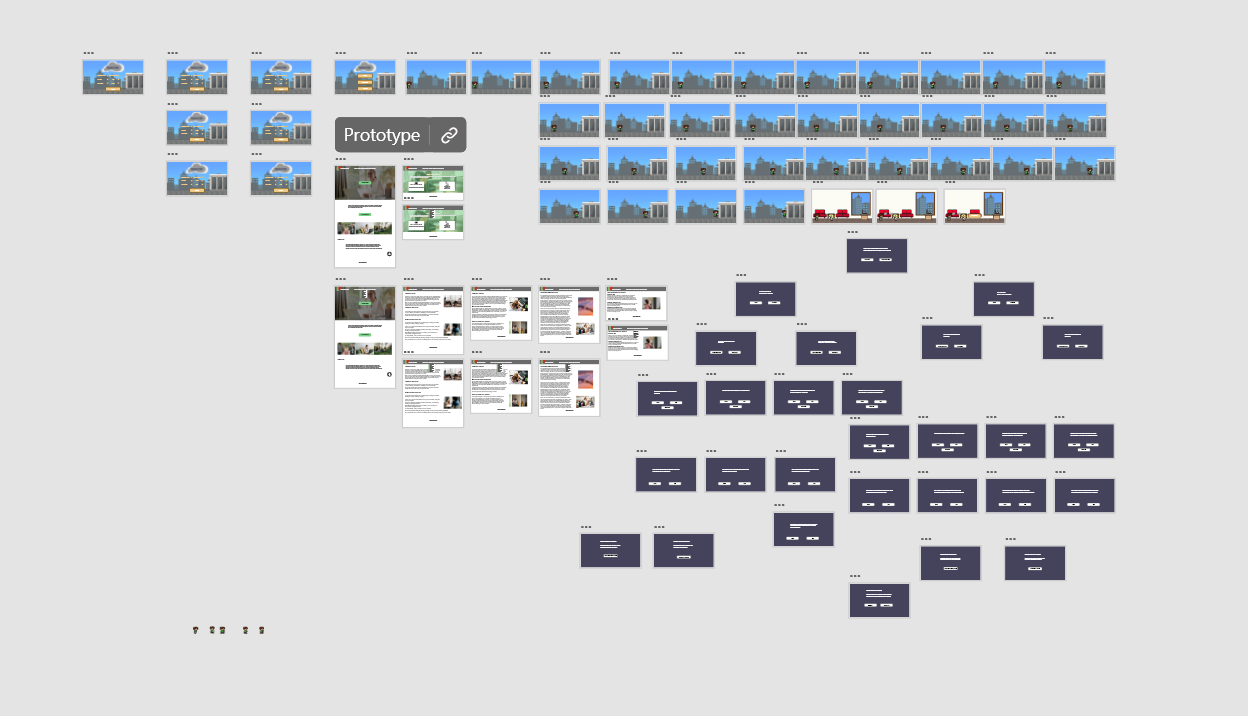
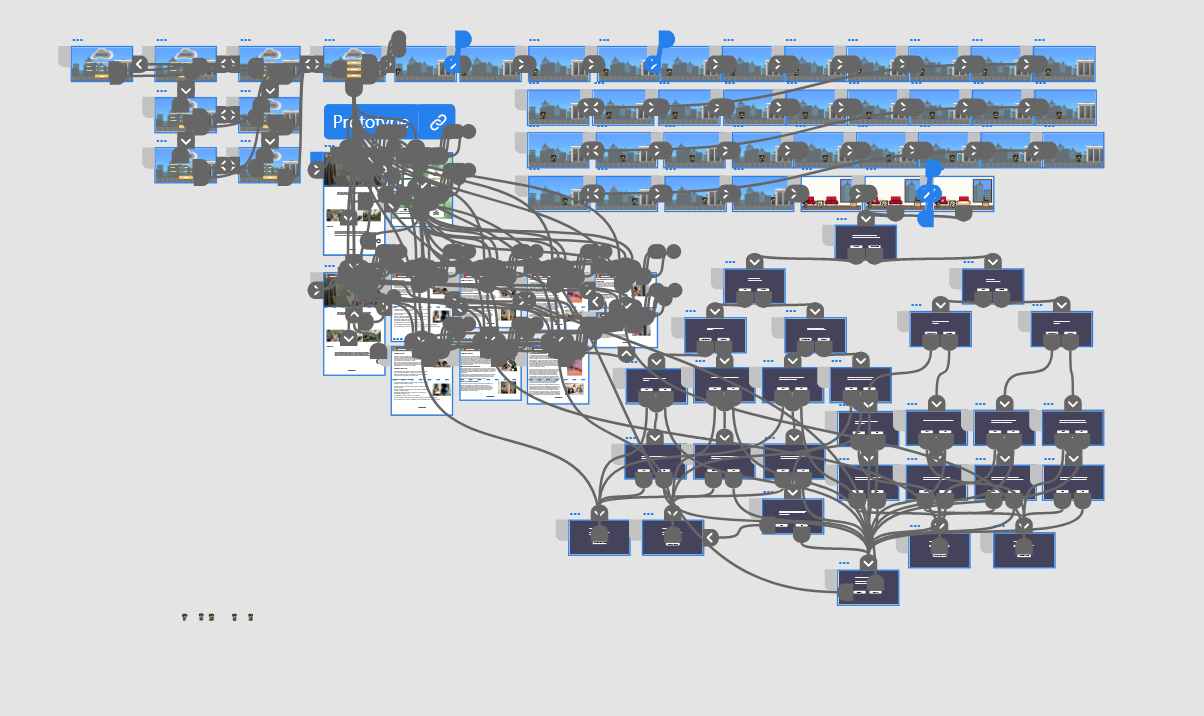
This image shows the intricate network of a bustling system, where the connecting lines highlight the complex journeys a user can take between different parts. It goes beyond a simple layout to show the actual flow of interaction, demonstrating how user choices create a web of interconnected pathways. The diagram gives a clear picture of the system's operational complexity and the unified experience it provides.
Results
I’m excited to share the interactive prototype for my Honours Project!
Explore its features, experience my vision in action, and see where creativity meets functionality.
Thank you for taking the time to visit my Honours Project page—it means a lot.
Reflection
University Presentation Day
This project poster, presented at Edinburgh Napier University, showcases my Honours project on the “Gamification of Anxiety and Depression Among Students.” It highlights the research, design, and development process behind creating an interactive prototype that spreads awareness through a retro-style, multiple-choice game. On presentation day, I engaged with fellow peers and lecturers, discussing how the game’s design aims to promote understanding and comfort for users. The session also involved answering questions from the project marker, who explored aspects of the game’s functionality, design choices, and potential for further development into a fully functional website or game application.
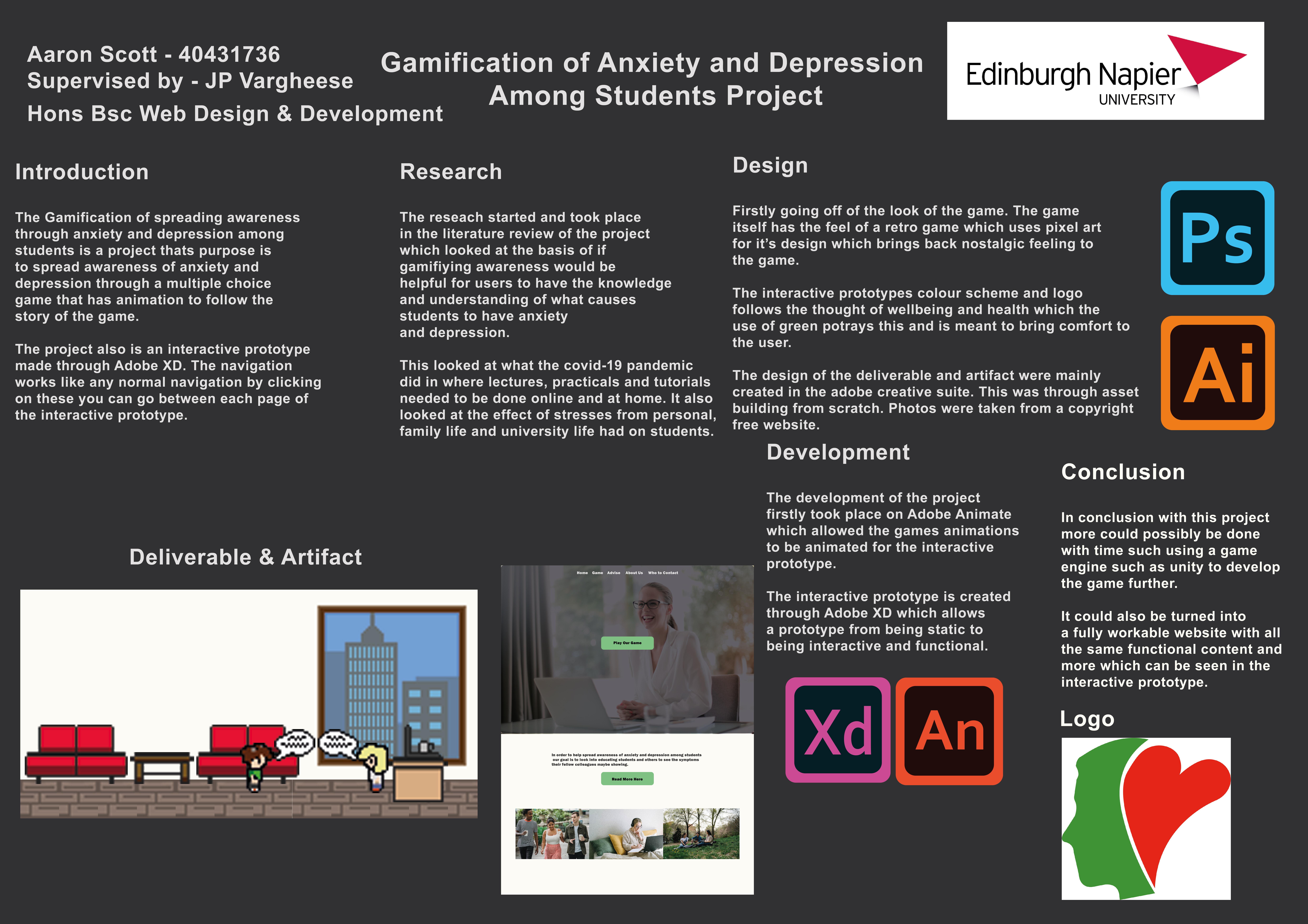
Thoughts
I am proud of the outcome of my Honours Project and the creativity it showcases. The project underwent user testing with 5 to 7 participants, who responded positively to the concept and the information behind it, and were impressed by how I brought functionality to the game using the chosen program. In the future, I aim to refine its visual style and overall user experience, and ultimately develop it into a fully functional website and game to share through my portfolio.